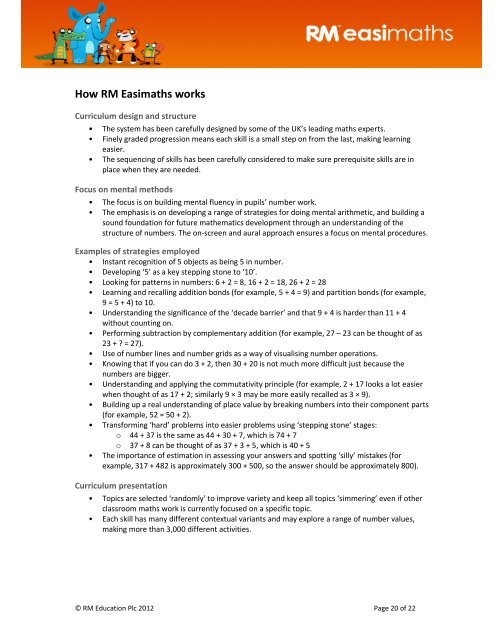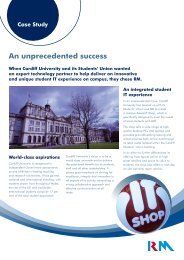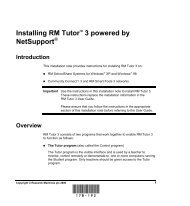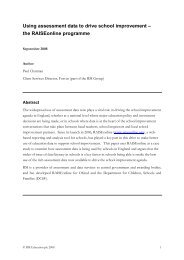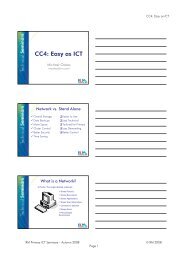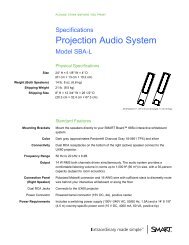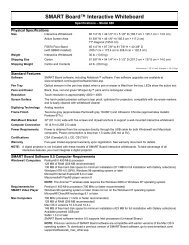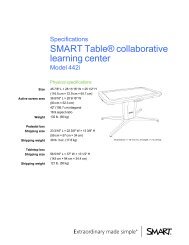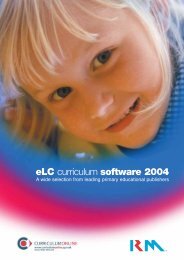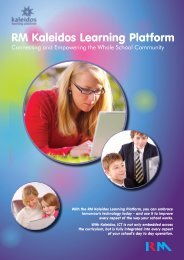Download - RM plc
Download - RM plc
Download - RM plc
Create successful ePaper yourself
Turn your PDF publications into a flip-book with our unique Google optimized e-Paper software.
How <strong>RM</strong> Easimaths works<br />
Curriculum design and structure<br />
• The system has been carefully designed by some of the UK’s leading maths experts.<br />
• Finely graded progression means each skill is a small step on from the last, making learning<br />
easier.<br />
• The sequencing of skills has been carefully considered to make sure prerequisite skills are in<br />
place when they are needed.<br />
Focus on mental methods<br />
• The focus is on building mental fluency in pupils’ number work.<br />
• The emphasis is on developing a range of strategies for doing mental arithmetic, and building a<br />
sound foundation for future mathematics development through an understanding of the<br />
structure of numbers. The on-screen and aural approach ensures a focus on mental procedures.<br />
Examples of strategies employed<br />
• Instant recognition of 5 objects as being 5 in number.<br />
• Developing ‘5’ as a key stepping stone to ‘10’.<br />
• Looking for patterns in numbers: 6 + 2 = 8, 16 + 2 = 18, 26 + 2 = 28<br />
• Learning and recalling addition bonds (for example, 5 + 4 = 9) and partition bonds (for example,<br />
9 = 5 + 4) to 10.<br />
• Understanding the significance of the ‘decade barrier’ and that 9 + 4 is harder than 11 + 4<br />
without counting on.<br />
• Performing subtraction by complementary addition (for example, 27 – 23 can be thought of as<br />
23 + ? = 27).<br />
• Use of number lines and number grids as a way of visualising number operations.<br />
• Knowing that if you can do 3 + 2, then 30 + 20 is not much more difficult just because the<br />
numbers are bigger.<br />
• Understanding and applying the commutativity principle (for example, 2 + 17 looks a lot easier<br />
when thought of as 17 + 2; similarly 9 × 3 may be more easily recalled as 3 × 9).<br />
• Building up a real understanding of place value by breaking numbers into their component parts<br />
(for example, 52 = 50 + 2).<br />
• Transforming ‘hard’ problems into easier problems using ‘stepping stone’ stages:<br />
o 44 + 37 is the same as 44 + 30 + 7, which is 74 + 7<br />
o 37 + 8 can be thought of as 37 + 3 + 5, which is 40 + 5<br />
• The importance of estimation in assessing your answers and spotting ‘silly’ mistakes (for<br />
example, 317 + 482 is approximately 300 + 500, so the answer should be approximately 800).<br />
Curriculum presentation<br />
• Topics are selected ‘randomly’ to improve variety and keep all topics ‘simmering’ even if other<br />
classroom maths work is currently focused on a specific topic.<br />
• Each skill has many different contextual variants and may explore a range of number values,<br />
making more than 3,000 different activities.<br />
© <strong>RM</strong> Education Plc 2012 Page 20 of 22


